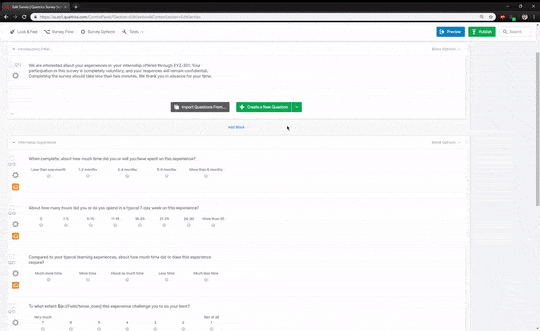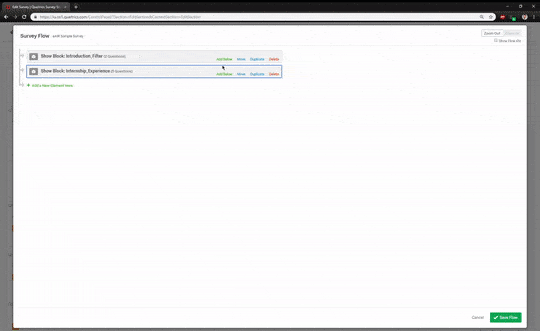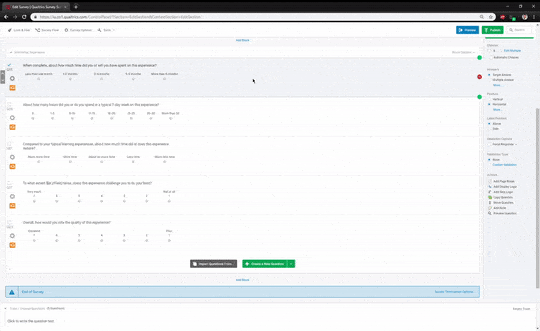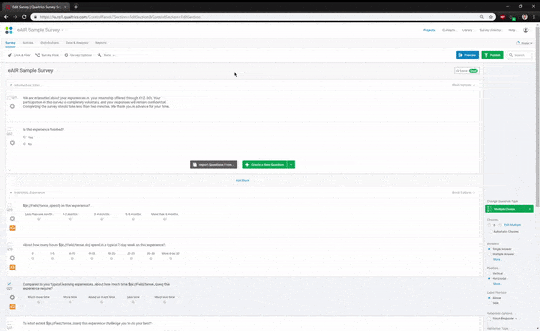Embedded Data: Dynamic Survey Questions in Qualtrics
Surveys in higher education often target students at different levels of their degrees, which makes survey design tricky.
Qualtrics has a useful feature to dynamically adapt survey questions to meet the survey requirements: embedded data – which is a part of Survey Flow.
Suppose we’re interested in surveying students about internships arranged through their department. Some internships are for the department itself, while others are held in other offices on campus, or in organizations off campus. While many may span the semester, others might carry on into the summer, and some may end sooner than the academic year. Provided the students have been participating long enough, we want to ask a few questions about their experiences.
In this scenario, survey questions quickly become cumbersome to write and would place an additional burden on the respondent. Imagine reading a survey in which every question features this kind of construction:
(Q2.1) When complete, about how much time did you spend, or will you have spent on this experience?
(Q2.2) About how many hours did you or do you spend in a typical 7-day week on this experience?
(Q2.3) Compared to your typical learning experiences, about how much time did or does this experience require?
(Q2.4) To what extent did or does this experience challenge you to do your best?
A simple solution that avoids using one tense or the other involves a creating filter question and separate question blocks for each, directing respondents appropriately.

Of course, this involves manually editing question text and creates a duplicate set of variables (one for each tense or variation), adding more time to data cleaning and analysis on the back end, e.g.,
(Q2.1 past) About how much time did you spend on this experience?
(Q2.1 future) When complete, about how much did will you have spent on this experience?
Setting embedded data based on the filter question obviates the need for running the parallel question blocks.
Embedded data allows for customization beyond piped text and skip logic. Adding branches to the survey conditioned on responses to the filter question lets us customize the embedded data so that questions read appropriately and more clearly for each respondent. In this case, we created a branch in Survey Flow for students whose internships have finished and set embedded data fields to read in the past tense, and a branch for those whose internships are ongoing, and set embedded data fields to the present. The underlying question block remains the same.

Once branches are created and embedded data set, question text can be modified by adding embedded data values via piped text, similar to piping survey responses into question text (“Earlier you indicated you were very satisfied with your internship”). Embedded data can also be useful when piping response options would be too clunky, such as when response options are long statements. In that case, embedded data can be set to abbreviated versions of the statements.

This will read a little awkwardly in the survey editor, but will appear as it would to respondents when using the Preview function where we can ensure that embedded values, skip and display logic, and branches all appear correctly. As an additional check, we can also take the survey by sending an anonymous link to ourselves to ensure everything is as it should be.

Using embedded data fields can help write dynamic survey questions as well as avoid duplicating items or involving complicated flow logic, so that regardless of which customized version of the question the respondent receives the responses appear under the same variable in the final dataset.
